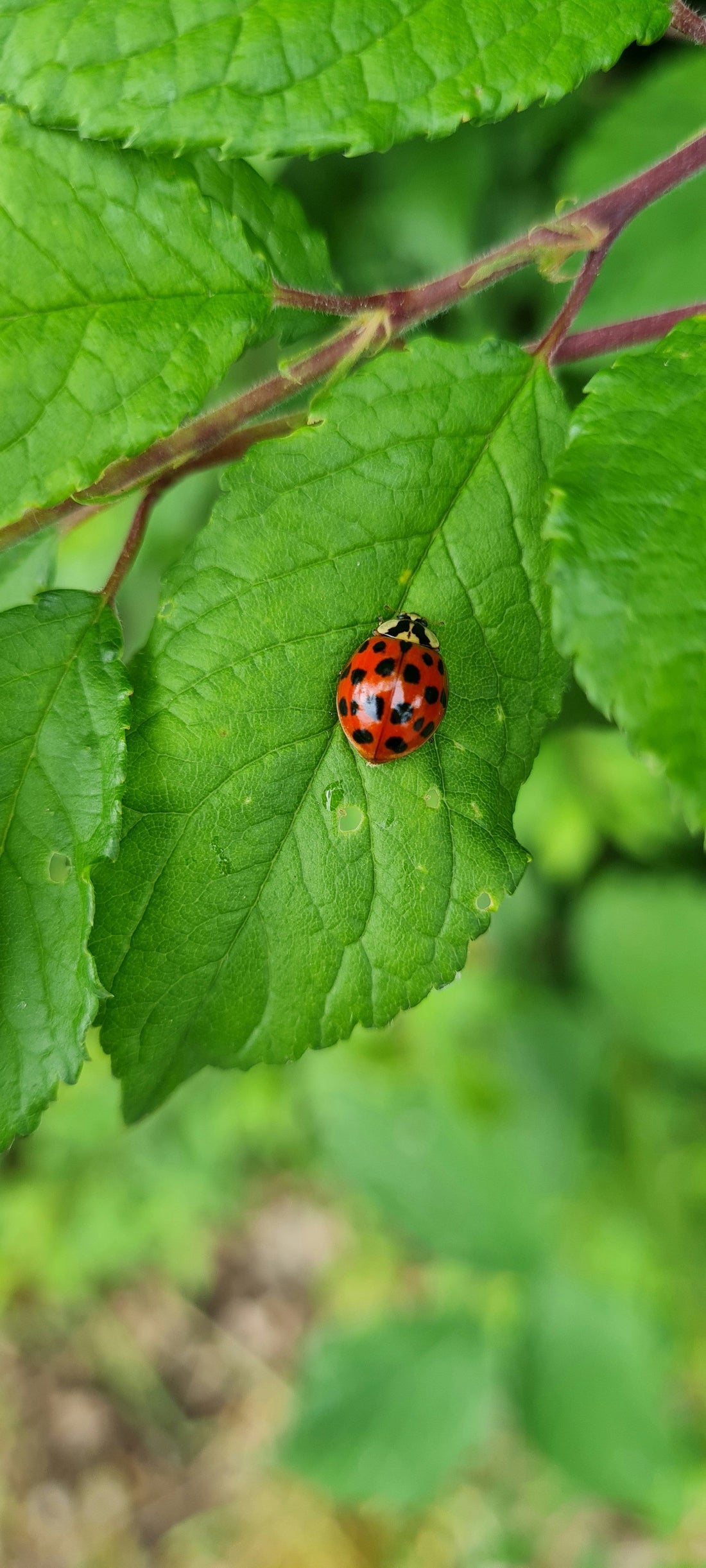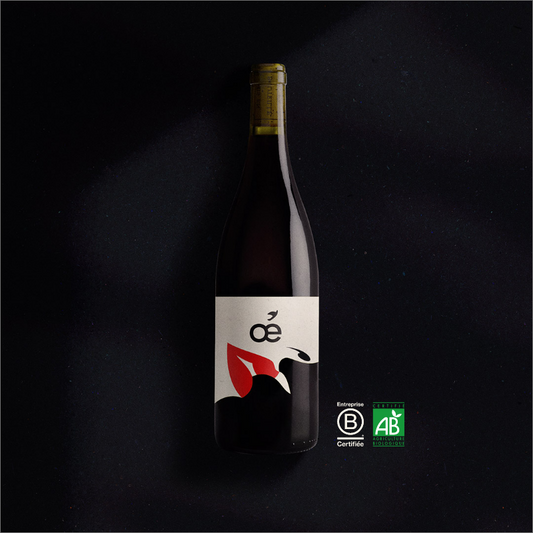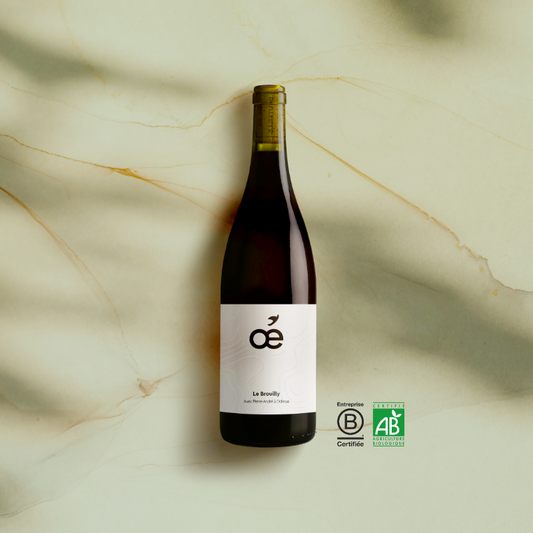Ah biodiversity… If you only knew how we like it in the vineyards! In any case, the Oé winegrowers, who produce wines that are all certified organic, vegan and zero pesticides , put it at the heart of their work. Every day, it is thanks to her that their vines flourish and that they produce good grapes that will end up in your glasses. So it goes without saying that we must protect it, O beautiful biodiversity , from all the things that could harm it, like all those words we don't like to say: overexploitation of the soil , chemical fertilizers, deforestation, global warming , disappearance of 'species...
Its protection is a real challenge for our planet, and to preserve it, we must rethink our farming methods and develop sustainable and ecological production practices . Viticulture , like any other type of agriculture, can make a contribution. Our winegrowers are sensitive to the balance of the ecosystem within their vines, which is why they advocate a committed approach to promote the development of biodiversity in their plots.
Topo on biodiversity
Biodiversity comes from the Greek bios which means life and from the term diversity. It is the diversity of life forms and environments within our planet . It's beautiful, isn't it? The diversity of plant and animal species and their interactions create ecosystems. These ecosystems are based on a balance that brings us much more than what we humans bring to them. They give us resources in food and raw materials and help us in particular to fight against climate change .
The Oé Program for Biodiversity
At Oé, we care about the planet and its ecosystems. This is why we created the Oé Program for Biodiversity . Our goal is to help winegrowers push the envelope further in their ecological approach and always do better than simply follow the Organic Agriculture label and its specifications.
We value the existing initiatives in the plots and we give advice for improvement. The installation of birdhouses and bat houses is recommended . Vineyard boxes or attics are perfect for hosting our flying mammals. We also know that it is a good idea to give preference to species of late-ripening fruit trees such as the cherry tree or the walnut tree, which offer flowers in autumn at a time when resources for pollinating insects and birds are scarcer. All these initiatives allow us to offer good organic wine that respects the environment.
Biodiversity in the vineyards
In organic viticulture , the winegrower uses biodiversity to nourish his vines, assist him in his work and limit the use of inputs such as chemical pesticides and phytosanitary products .
The winegrower uses different methods in favor of biodiversity. It creates grassy strips, plants hedges and/or isolated trees . He builds low walls and installs birdhouses , beehives and/or shelters for bats . Vegetated areas limit erosion, diversify production and create an ideal space for wildlife that regulates pests and pollinates crops. This is the role of crop auxiliaries in particular .
Biodiversity also plays a role in tourism and heritage within the vineyards . By creating a diversified space rich in life and products, the winegrower can offer visits, create routes and offer different products to his visitors such as fruit and honey. Biodiversity shapes the vine and contributes to the embellishment of a typical and recognizable landscape.
However, it faces several dangers such as soil destruction , deforestation , climate change which can lead to the disappearance of species and the depletion of our resources. It's not great news, but it's not new. On the other hand, the good news is that nothing is irremediable and that everyone can contribute in their own way to preserve biodiversity . In the context of organic farming , soil fertility is maintained and crops are perpetuated thanks to the diversity of fauna and flora on the plots to make them sustainable.

What type of biodiversity in our vines?
Biodiversity through trees and plants
Plant biodiversity takes different forms in the vineyards. We help you imagine it. These are the hedges at the edge of the plot, the small plants or the beautiful flowers between the rows of the vine , the large and majestic isolated trees set back from the crop. That's it, are you visualizing?
And what exactly do the plants bring to the vines ? Lots of things Jamy! The roots supply water to the crops that are on the surface. Tree and herbaceous areas , i.e. areas rich in trees and plants, facilitate water infiltration into soils, limit the effects of runoff and erosion, and improve soil structure . The trees capture nitrogen and feed the vine plants, which does not require the use of chemical inputs. Plant diversity also makes the crop less vulnerable to diseases such as botrytis cinerea . No, it's not a dinosaur or a character from Game of Thrones. It is a fungus that causes fruit rot and whose appearance is facilitated by the use of nitrogen fertilizers. More nature and less rot in our vines? At Oé, we say yes!
The benefits don't stop there. Our friends the trees, hedges and plants bring a lot of biomass to the soil and organic matter , which facilitates its fertility . They ensure a role of micro-climatic protector, whether against wind or drought. Large trees have a windbreak effect, shade the vines and recycle water, which promotes humidity in periods of high heat. They also diversify the productions (wood, fruit, honey) and break the homogeneous character of the culture by creating a biological corridor which facilitates the appearance and the movement of species within the vine . As a complement to the hedges, a dry stone wall rich in cavities provides shelter for wildlife. To regulate the vegetation, the use of mineral substrate is less harmful for the vines than herbicides. The vines are greener, closer to nature, more organic!
The subject interests you ? You can find out more with the articles below:
- Agroforestry at the heart of biodiversity
- The role of hedges in vineyards
- Companionship in organic viticulture
- Wetlands, an ally for diversity and the vine
- Let's fight to protect isolated trees

Biodiversity through animals
Our animal friends have more than one trick up their sleeve to help the winegrower in his tasks. More and more winegrowers are intensifying their production methods to always do more. And unfortunately, sometimes they do this to the detriment of the wildlife that lives within it. When the winemaker puts more vegetation in his vines , he provides habitat, shelter and a feeding area for wildlife who rest their luggage in the crop. The more diverse the vegetation, the more diverse the fauna, there are no secrets. Large trees are favorable to raptors, smaller trees and shrubs make perfect cozy nests for smaller birds like the robin or small mammals like the hedgehog. Grassy areas are also rich in insects and spiders.

Bees play an important role both in the transport of pollen within the vine, in the regulation of species and in ensuring a good balance in the ecosystem. Insectivorous birds regulate the presence of pests that can harm the condition of the vines. Bats readily prey on moths and cluster worm-causing species. Spiders and ladybugs feast on a good banquet of mites, mealybugs or aphids which are species that attack vines.
And yes, in the vineyards , young and old each have a say. Invertebrates such as earthworms present in the soil are important for the recycling of material left by trees and for the circulation of water. The sheep, on the other hand, will be used to regulate the herbs. This is called the lambskin . Yes, yes, you are not dreaming, the term does exist and also makes us laugh a lot! For those who don't know, the moutondeuses are sheep that mow the plots of vines instead of a mechanical machine. Smart, isn't it?
Oé winegrowers work for biodiversity
The Oé winegrowers have understood the importance of biodiversity in the vines and work every day for it. This is the case of Emmanuel, our winemaker in Sorgues. He installed beehives in his plots, nesting boxes for birds and bats .
In addition to its vines, it has fields of lavender and offers its visitors various products such as honey, essential oils and even soap. It is from these grape varieties that our delicious Châteauneuf-du-Pape and our white Côtes-du-Rhone come to us.
Franck and Véronique, our winegrowers in Pujols, also work to develop biodiversity in their vines. They plant hedges and create areas to promote the return of biodiversity to their plot. As part of the Oé Program for Biodiversity, we have teamed up with Ecofarms and Miimosa to help Franck and Véronique with their projects.








